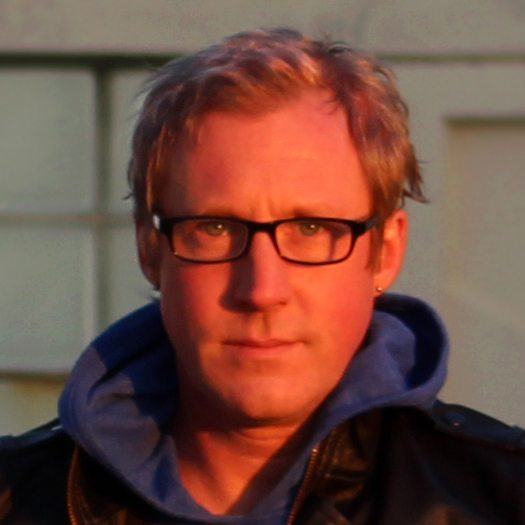The Making of ‘The Cold War Vault – Stories from the Most Dangerous Decades in History’

When D J Kinney defended his PhD dissertation in the fall of 2018, he decided not to seek an academic job straight away. Instead, he set out to share his passion for the Cold War era with a broader audience. “I love telling stories and making podcasts about the Cold War was a natural extension for me.” Thus, The Cold War Vault was born.
Kinney had been fascinated by the Cold War from a young age onward. In one of the earliest podcast episodes, he narrates how he was drawn to the topic. ‘The Last of the Cold War Kids’ delves into his entanglement with the film ‘Threads’ (1984) as a youngster and relates his elation at the fall of the Berlin Wall. Most of the material for his series is based on his ongoing engagement with the Cold War era. Only rarely does Kinney draw on his PhD dissertation, ‘Nuclear Spaces: Simulations of Nuclear Warfare In Film, by the Numbers, and on the Atomic Battlefield.’
It took Kinney three months to get ready for his first audio recording. “Since I wanted to make successful podcasts, I realized that I needed professional equipment, a dedicated workspace, and a reliable distributor. It was very important for me to start the way I wanted to continue. You should not do most of the learning on the job.” For this project, Kinney combined the skills he had acquired from undergraduate film-making courses at University of Florida with the knowledge he had gained from the PhD program in history at FSU.
For the launch of his series, Kinney made five episodes in advance. Since then, episodes have been released every two to four weeks and tend to be between 20 and 40 minutes in length. Each episode is closely scripted and involves narration and music. Kinney aims to tell his stories a little bit differently from what is already available. He goes beyond the textbooks and well-worn timelines of the Cold War and explores new stories and alternate takes on history. Given the length of the Cold War, he will never run out of material. The challenge for him is that he is not an expert on every facet of the topic.
Topics have ranged from submarine disasters to multi-part series on the Net Evaluation Subcommittee, the impact of Chernobyl as well as nuclear testing in Alaska and the birth of the environmental movement in the US. Recently, there have also been interviews and book discussions too. A current event slot called ‘Fearmonger Friday’ is also a part of his repertory.
Each episode follows a similar format, closely modeled on journalistic storytelling. Kinney calls it the ‘NPR format of narration.’ An introductory snapshot draws the listener in and loops out to provide historical context. The amount of material that Kinney’s research uncovers per topic determines whether a podcast is free standing or part of a series. His personal interests, current events, and topics that he was introduced to at university all influence what he covers.
One of the major challenges that Kinney encountered was the business side of things. Especially in the beginning when The Cold War Vault was virtually unknown, Kinney spent a lot of time on getting the word out. “Advertising was crucial when I started, especially making a splash on the different social media platforms.”
A second thing he had to master was the advertising metrics for podcasts. What counted for sponsors was how many people listened to his episodes in the first week of their release – regardless of how many listened to them over time. Kinney has been able to grow his subscriber numbers continuously – but events like the pandemic had an impact on his audience numbers too. He currently has ca. 10,000 followers.
Kinney signed up for Patreon, a membership platform that helps content creators run a subscription service. This allows him to offer more perks to subscribers following the site through Patreon and provides him with funds on a recurring basis.
One of the main things that Kinney enjoys is engaging with his audience. “Seeing that real people are listening to my recordings, and interacting with them, has been an amazing experience.” He has created a community that provides him with feedback, questions, and ideas.
The one piece of advice that Kinney would give to himself, if he could start all over again, and to others who want to embark on a similar venture of creating commercial podcasts, is: think about sustainability. “Consider not just about how exciting it is to start making podcasts and gaining followers, think also how this might feel two years down the road.” Kinney’s advice is to go into the project with open eyes. Needing to produce a podcast every two weeks, which means researching the topic, writing the script, recording the talk, and editing the music into it, does not leave a lot of spare time for other things.
Teaching History at Marquette University past spring, Kinney had to put bigger spaces between the release dates of his more recent podcasts. “Once you have laid certain foundations, raised certain expectations with your subscribers, you need to deliver to satisfy your audience. It’s really important to have realistic and achievable goals, and a schedule that you can meet in the long run.”
To listen to the podcasts, you can subscribe through Apple Podcasts and anywhere you subscribe to your favorite podcasts or visit his website at: https://www.coldwarvault.com/ With more than 40 episodes readily available, Kinney advises: “Take off your gas mask, break out a pack of civil defense survival biscuits and settle in – You are in the Cold War Vault.”

